Top 10 Largest U.S Military Bases In the World - Total 750 Bases (2023/2024)
♦ How Strong Is The American Army - No.1 Militaries In The World and Fact-Check
♦ How Strong Is The British Army - 8th Strongest Militaries In The World
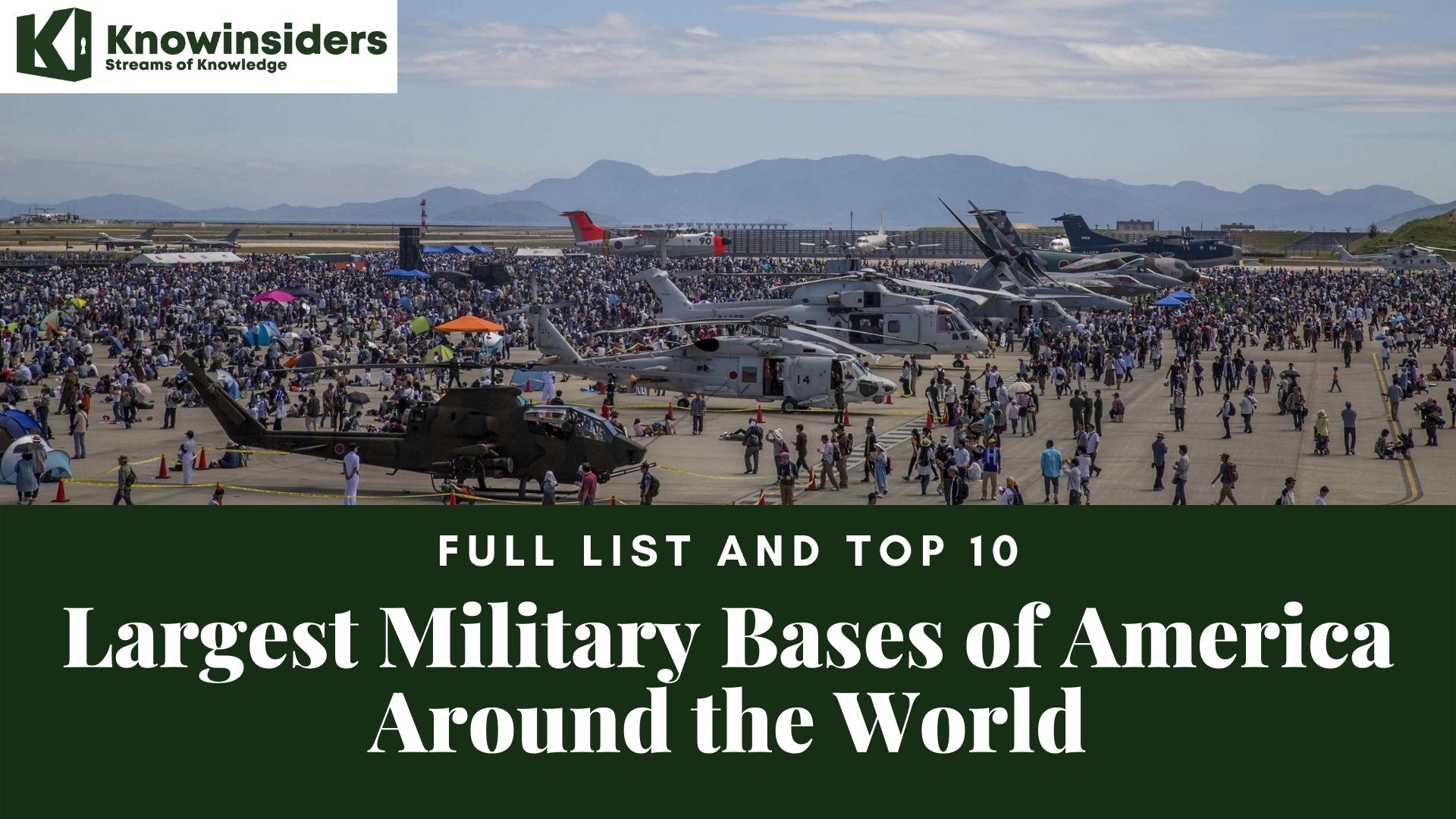 |
| Full List and Top 10 Largest Military Bases of America Around the World |
How Many US Military Bases Are There Around the World: 750 Bases in 80 Countries
Some 750 to 800 American military bases (as of February 2023) are still operational in 80 different countries and territories. There has never been any nation with such a strong footprint in human history. The largest colonial power, Great Britain, had a modest army. The study figures the annual cost of this expansive base structure to be about $55 billion. Adding increased personnel expenses takes the total up to $80 billion.
Much of the military budget goes toward maintaining a network of over 1,000 bases within the United States, even though the focus on defense spending is usually on military activity abroad and weapons contracts with private-sector companies. The Department of Defense (DOD) owns more than 25 million acres of land in the United States, making it one of the largest federal landholders. This area is roughly the size of Kentucky.
With 120 active bases, Japan has the highest number of US bases in the world followed by Germany with 119 and South Korea with 73.
The Conflict Management and Peace Research Journal reported that as of 2020, the US had approximately 173,000 troops deployed in 159 different nations.
Together with American bases, Japan, Germany, and South Korea are the nations that host the most US troops, totaling 53,700, 33,900, and 26,400 respectively.
Below is the full list and top 10 largest military bases of America around the world, ranked by Knowinsiders.com in 2023.
What are the Largest Military Bases of America Around the World?
1. Thule Air Base, Greenland
 |
| Photo: High North News |
> Base size: 233,034 acres
> Cost of base: $4.7 billion
> Service branch: Air Force
> Nearest city: Thule
With a population of about 56,000, Greenland is a country within the Kingdom of Denmark and home to the Thule Air Base (pronounced too-lee). The ice cap or smaller glaciers cover more than 80% of Greenland's area, which is just under 840,000 square miles. Despite the fact that ice keeps Thule AB closed for nine months of the year, the airfield is always open and in use.
Agreements between the United States and the Kingdom of Denmark, notably concerning mutual defense, are the reason why Thule AB exists today. Space Superiority is made possible by Thule AB's strategic "Top of the World" vantage point. The solid-state phased-array radar operated by the 12th Space Warning Squadron (12 SWS) and the Thule Tracking Station run by the 23rd Space Operations Squadron, Detachment 1 at Thule AB provide missions for missile warning, missile defense, and space surveillance (Det-1).
The 821st Air Base Group, which is a division of Space Base Delta 1, manages Thule AB, the Department of Defense's furthest northern outposts.
The largest military installation outside of the United States is the Thule Air Base in Greenland. It also holds another distinction: at 750 miles from the Arctic Circle, it is the northernmost base of any US installation. One of the most remote locations in the world is Thule, which serves as the 821st Air Base Group's headquarters. It was initially constructed during the Cold War for defense purposes. The United States recently finished a revamp of missile defense systems there due to North Korean saber-rattling and growing worries over Russian territorial ambitions. The software for its radar system was upgraded for $40 million.
2. Camp Fuji Japan, Japan
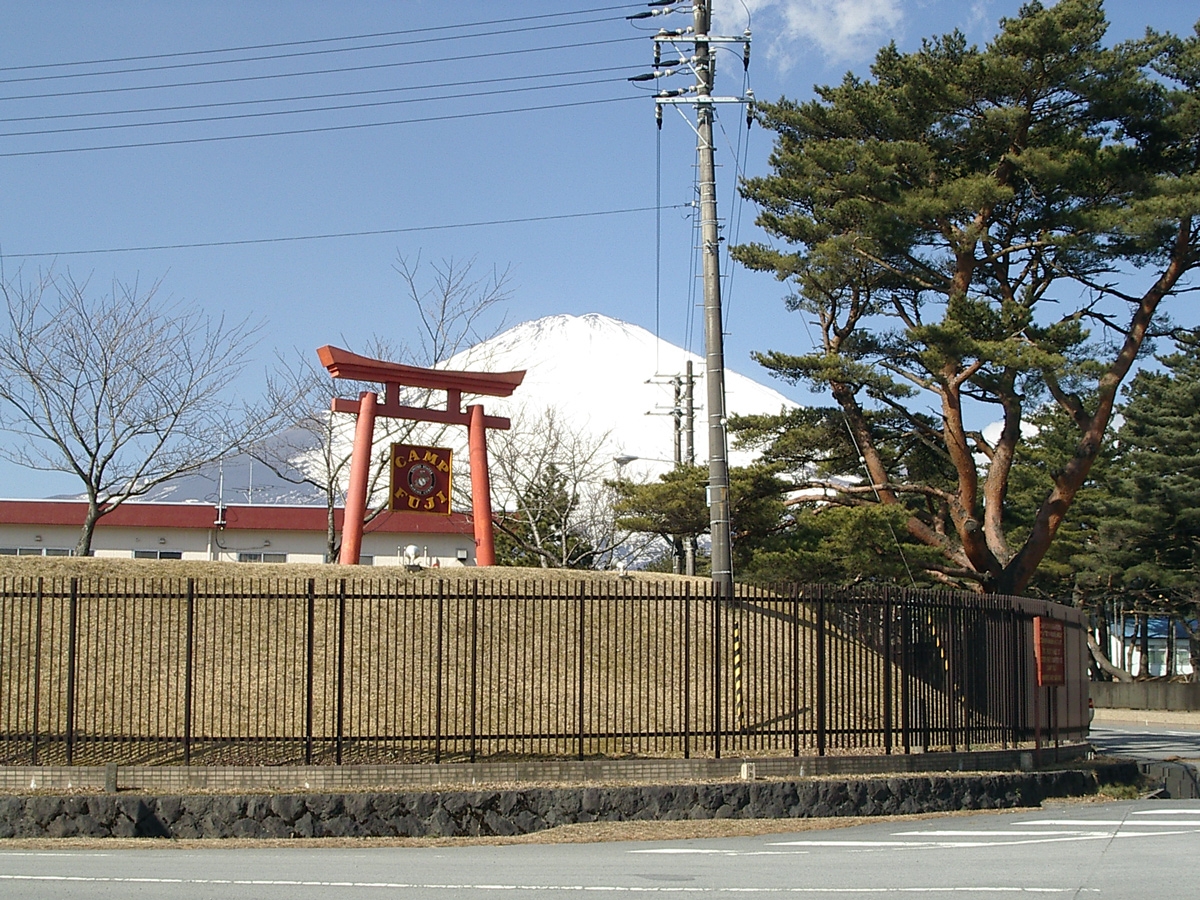 |
| Photo: Wikipedia |
> Base size: 33,384 acres
> Cost of base: $432.9 million
> Service branch: Marine Corps
> Nearest city: Fuji
Less than two hours separate Camp Fuji, which is situated on the Honshu island, and Tokyo. Since at least the latter half of the 12th century, during the reign of the Kamakura Feudal Government, the area of modern-day Camp Fuji has served as a samurai military training site. Both the US and Japanese militaries use the live-fire ranges at the Fuji Maneuver Area. Before the Marines and Japanese defensive forces assumed control of the camp in the 1950s, the U.S. Army trained there before it was sent during the Korean War.
The combined arms training area of the 309-acre (1.25 km2) facility has 34 acres (140,000 m2) of ranges and maneuver space. Although the helicopter landing pad is a joint-use facility for the US and the JGSDF, Camp Fuji is solely under USMC administration.
Camp Fuji serves as a training location for units from all over the Pacific, particularly those involved in the Unit Deployment Program. Although extensive modernization and expansion programs from 1983 have added new barracks, an enlisted and officers club, a barber shop, a library, and food facilities, the facilities were considered sparse compared to most military bases because they had no family housing, few military exchange and recreation facilities, and few medical facilities.
Marine comfort was not a priority when Camp Fuji was first created. The United States Marine Corps does not give housing or moving allowances for families for Marines stationed at Camp Fuji because they are on a "unaccompanied tour." Only senior enlisted and commissioned Marines have the choice of staying off base with their families; all other Marines must leave the base.
Moreover, there isn't a functioning Navy hospital at Camp Fuji. Any Marines or sailors in need of critical medical care must go to the town's hospitals. The Marine Corps is also well aware of the base's notable absence of amenities for leisure time and off-duty activities. This caused the Marines to develop a significant degree of hatred over time. As a result, the Marine Corps launched a massive operation to upgrade the base, which is still ongoing today.
3. Naval Station Guantanamo Bay, Guantanamo Bay
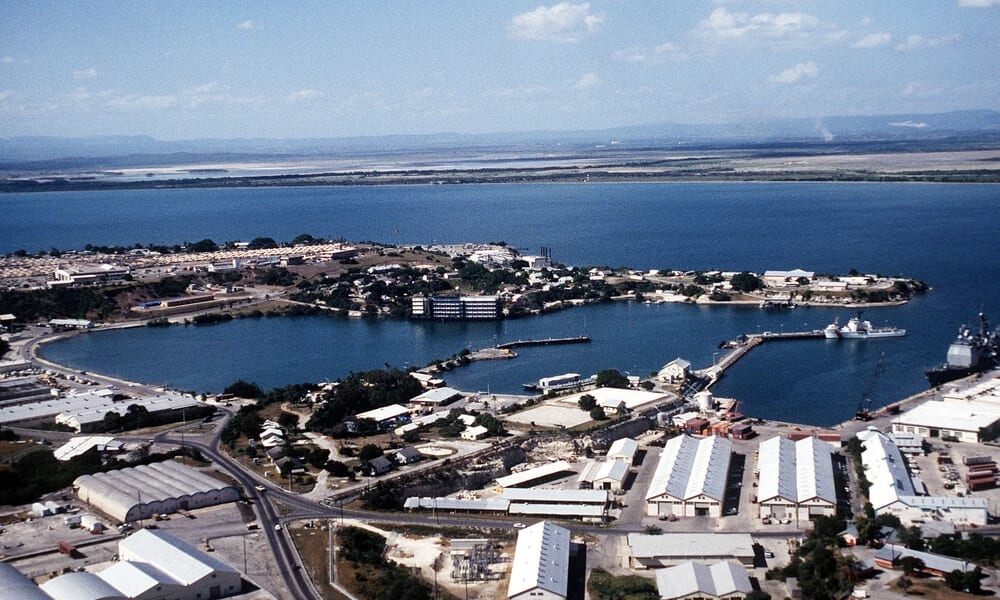 |
| Photo: Getty Images |
> Base size: 28,817 acres
> Cost of base: $4.6 billion
> Service branch: Navy
> Nearest city: Guantanamo Bay
Guantanamo Bay, frequently abbreviated to "Gitmo," is a naval base in southeast Cuba. Since 1903, following the Spanish-American War, the United States has leased the land the base is located on from Cuba, and the lease can only be canceled by mutual consent. In 1934, the two nations agreed to a permanent lease, which now pays America $4,085 annually. The building is seen as a relic of American imperialism in Cuba. Combatants in the war on terror are housed in detention facilities at the site. More than a third of the 6,000 residents of the Guantanamo Bay naval installation are Jamaican and Filipino workers.
Guantanamo Bay Naval Base (Spanish: Base Naval de la Bahia de Guantánamo), also known as GTMO (pronounced Gitmo by the U.S. military), is a United States military base situated on 45 square miles (117 km2) of land and water on the shore of Guantánamo Bay at the southeast corner of Cuba. It is officially known as Naval Station Guantanamo Bay or NSGB. It is the oldest overseas U.S. naval post in the world and has been permanently leased to the United States since 1903 as a coaling station and naval base. Up until 1934, the lease was set at $2,000 in gold per year; however, in 1974, the annual lease was increased to $4,085.
The Cuban communist government has consistently protested the U.S. presence on Cuban land since coming to power in 1959, claiming that the base "was forced on Cuba by force" and is unlawful under international law. A military prison for accused illegal combatants caught in Afghanistan, Iraq, and other locations during the War on Terror has been housed at the naval facility since 2002. The United States military has come under fire for cases of alleged torture of detainees and for refusing to provide protection under the Geneva Conventions.
The US Navy's decision to leave the area or a mutual agreement between the two countries would be required for the 1903 Cuban lease of Guantanamo Bay to come to an end.
4. Camp Hansen, Japan
 |
| Photo: Asahi |
> Base size: 12,037 acres
> Cost of base: $2.7 billion
> Service branch: Marine Corps
> Nearest city: Onna Okinawa
In Okinawa, Japan, there is a base for the US Marine Corps called Camp Hansen. The camp is the second-northest significant installation on Okinawa, behind Camp Schwab, and is located in the town of Kin, close to the northern shore of Kin Bay. Nowadays, the camp is home to over 6,000 Marines and is a part of Marine Corps Base Camp Butler, which includes all Marine Corps locations on Okinawa but is not a real base.
Dale M. Hansen, a Marine Corps soldier who received the Medal of Honor for his valor in the battle for Hill 60 during the Battle of Okinawa, is the subject of the name Camp Hansen. After his actions on Hill 60, Hansen was struck by a Japanese sniper's bullet three days later.
The Camp, which was constructed on the site of the former Chimu Airfield, took USN Mobile Construction Battalions 3, 9, and 11 29 months to build.
The northern region of the island is home to Camp Hansen, which was established in honor of Marine Pvt. Dale M. Hansen, who received the Medal of Honor for his bravery during the Battle of Okinawa. It is one of many American military installations on Okinawa. There, live fire training exercises are currently being conducted by American troops. The base is also used by Japanese military. 100 buildings will be built at Camp Hansen as part of relocation plans to consolidate military installations on the island, the U.S. and Japanese governments stated last year.
5. Area C-HFR, Australia
> Base size: 9,463 acres
> Cost of base: N/A
> Service branch: Navy
> Nearest city: Exmouth
Area C-HFR is one of the communications facilities that the U.S. Navy jointly operates with Australian military forces in western Australia. HFR stands for high frequency receiver. The facility is the southernmost of three installations on a peninsula in Western Australia that separates the Exmouth Gulf from the Indian Ocean.
The communications installation was set up to communicate with submarines and surface vessels in the Indian and western Pacific oceans.
6. Camp Gonsalves, Japan
> Base size: 9,040 acres
> Cost of base: $43.1 million
> Service branch: Marine Corps
> Nearest city: Henoko Okinawa
In Northern Okinawa, Japan, Camp Gonsalves is situated between the communities of Kunigami and Higashi. JWTC spans 17,500 acres (71 km2) and includes 22 helicopter landing zones, a water surface beach access, four bivouac sites, three outdoor learning spaces, a firebase, three target sites for third-world villages, and a target missile site.
The Jungle Warfare Training Center (JWTC), also known as the Northern Training Area (NTA), is located in Northern Okinawa and encompasses 17,500 acres (71 km2) of jungle. For more than 50 years, the U.S. Marines have faced difficulties in the art of jungle warfare due to the region's rocky and harsh terrain, covered with single and double canopy forests. The region presents the same difficulties that helped prepare our forebears for operations in Southeast Asia when it was established in 1958 as a Counter Guerilla school during the early years of the Vietnam War. The base camp at NTA steadily changed over time from a few Quonset huts and other modest structures to the facility it is today, which was finished in 1984. The base camp was given the official name Camp Gonsalves on 5 November 1986 in honor of PFC Harold Gonsalves, who received the Medal of Honor posthumously for his valiant acts during the Battle of Okinawa. The Marine Corps Jungle Warfare Training Center became the official name of NTA in March 1998 in order to more accurately reflect NTA as a training facility. JWTC is currently the sole jungle training center used by the Department of Defense.
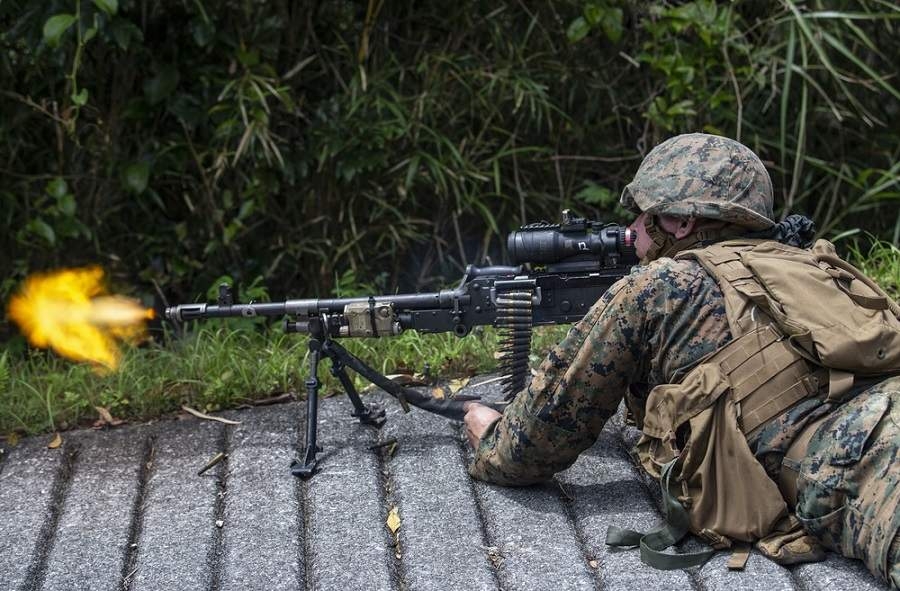 |
| Photo: The Stream |
Course in Jungle Skills
A Jungle Skills Course is offered by JWTC and covers fundamental Marine combat abilities in a jungle setting. Six days total—five of them training days—make up the course. The course aims to improve the training unit's small unit leadership, tactical mentality, and unit cohesiveness in addition to basic jungle warfare skills. Land navigation, patrolling, rope management & rappelling, and jungle booby traps are just a few of the classes offered in the Jungle Skills course, which can train up to 100 troops. The Jungle Endurance Course is the final component of the Jungle Skills course.
Jungle Chiefs
The goal of the Jungles Leaders course is to teach small unit leaders the fundamentals of small unit combat operations and jungle survival. It combines thorough fundamental warfighting skills with the previously taught Jungle Survival Course period of teaching. The Jungle Skills Training is required to enroll in the Jungle Leaders Course. The course is intended for small unit leaders from any military occupational specialty (Team Leaders to Platoon Commanders or equivalent) (MOS). Five training days make up the course's total of six days. A few topics covered in the Jungle Leaders training include patrol commands, patrolling, jungle casevac (Personnel Extraction), survival skills, defense, and setting up patrol bases. The course may train up to 25 people.
Intense Jungle Course
The culmination of the Jungle Skills Course is the Jungle Endurance Course. The E-Course makes use of lessons taught during the five-day Jungle Skills course. Students move through 3.8 miles (6.1 km) of deep jungle and difficult terrain in 12–18-man teams. Teams battle against one another as they work together to overcome 31 obstacles spaced out along the course. To finish the course, teams must complete quick rappels, rope obstacles, water obstacles, and a stretcher carry.
Separate Operations
JWTC provides spaces where units can function autonomously with advance coordination. Using the terrain, units have conducted Raids, Non-Combatant Evacuation Operations (NEO), Land Navigation, Fast Rope, SPIE Rigging, Communication Exercises, and Water Insertion.
7. Commander Fleet Activities Sasebo, Japan
 |
| Photo: Wikiwand |
> Base size: 7,733 acres
> Cost of base: $1.8 billion
> Service branch: Navy
> Nearest city: Sasebo
American Navy Activities On the island of Kysh, in Sasebo, Japan, there is a base for the US Navy. It offers facilities for specified tenant activities, visiting operating forces of the US Pacific Fleet, and forward-deployed troops' logistical support.
Since 1883, when Lieutenant Commander Tg Heihachir proposed the little fishing town as the foundation of a base for the Imperial Japanese Navy, Sasebo has served as a naval base. Admiral Togo's Japanese Navy ships engaged the Russian Baltic Fleet in battle off the coast of Sasebo in 1905, and Togo triumphed at the Battle of Tsushima.
At its height, the Imperial Japanese Navy employed some 60,000 people to furnish ships, submarines, and aircraft in the dockyard and related naval bases. The liberty port of Sasebo was well-liked by navy troops.
The Fifth Division of the U.S. Marine Corps arrived at Sasebo in September 1945, and U.S. Fleet Operations Sasebo was created in June 1946.
Three years later, Sasebo was the key staging area for the United Nations and American Troops when war broke out in Korea. On their journey to the United Nations Forces in Korea, millions of tons of ammunition, fuel, tanks, trucks, and supplies passed through Sasebo. Over 20,000 Americans had arrived in Sasebo by this point, and every day, about 100 warships and freighters added to the foreign presence there.
The Japan Self-Defense Forces were established following the conclusion of the Korean War, and Japan Maritime Self-Defense Force ships started calling Sasebo home (Sasebo District Force). The U.S. Fleet Activities kept assisting the Seventh Fleet of the United States' ships. Sasebo served as the homeport for Service Force ships.
Throughout the years of conflict in Southeast Asia, the U.S. Fleet Operations Sasebo gave the expanding Seventh Fleet significant support. Fleet visits decreased significantly after the Naval Ordnance Facility Sasebo replaced the U.S. Fleet Activities Sasebo in the middle of the 1970s.
When U.S. Fleet Operations Sasebo recovered its name and Seventh Fleet ships were once more forward-deployed to Sasebo on July 4, 1980, this trend was reversed.
American Navy Activities Sasebo served as a supply point for ammunition and gasoline for ships and Marines fighting in the Persian Gulf theater during Operation Desert Shield/Storm in 1990–1991.
As a result of the Barack Obama administration's East Asian foreign policy, Sasebo was enlarged and the number of LCACs stationed there was doubled.
8. Pyeongtaek Cpx Area, South Korea
> Base size: 7,640 acres
> Cost of base: $10.0 million
> Service branch: Army
> Nearest city: Pyeongtaek
In June of 2018, the United States opened its largest military base in South Korea in the city of Pyeongtaek, about 40 miles south of the capital of Seoul. The facility, named Camp Humphreys, is the new headquarters of the U.S. Forces Korea (USFK).
South Korea, which with its U.S. allies fought a war against communist North Korea and China in the early 1950s, is home to nine of the largest U.S. bases overseas.
9. Marine Corps Air Station Iwakuni, Japan
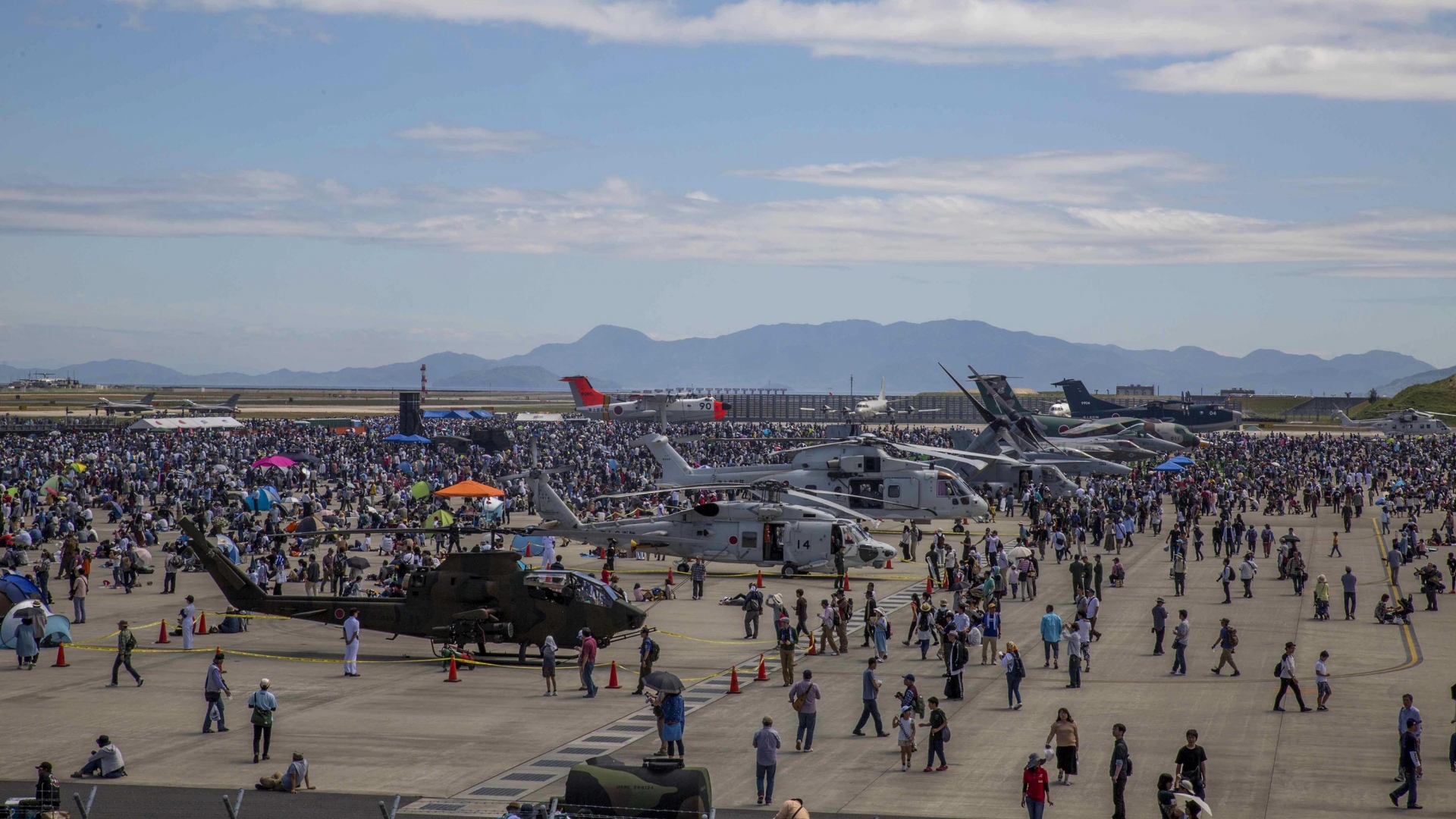 |
| Photo: PACOM |
> Base size: 7,111 acres
> Cost of base: $7.2 billion
> Service branch: Marine Corps
> Nearest city: Iwakuni
Marine Corps Air Station Iwakuni, Japan, is located about 600 miles southwest of Tokyo on the island of Honshu. The base hosts about half of the 1st Marine Aircraft Wing, which is headquartered on Okinawa, as well as other Marine group elements. There are about 15,000 personnel, including U.S. Marines and Japanese national employees, at the station.
Like many of the U.S. bases in Japan, the facility has its roots with the Japanese Empire, which developed the farmland as an air station at the outset of World War II. After the war, the base came under the command of the Royal Australian Air Force, then passed to several branches of the U.S. military until the Marines took over the facility in 1958.
US Marine Corps
Marine Aircraft Group 12 (MAG-12) contains the rotary and fixed wing aircraft assets of Marine Corps Air Station Iwakuni. MAG-12 is home to three flying squadrons, an aviation logistics squadron, and a ground support squadron.
VMFA-242 "Bats"— one of two permanent forward deployed Marine F-35B Lightning II fighter squadrons.
VMFA-121 "Green Knights"- the other permanent forward deployed Marine F-35B Lightning II fighter squadron.
VMGR-152 "Sumos" — moved here from MCAS Futenma in Okinawa commencing in June 2014 with their 15 KC-130J Super Hercules.
Marine Aviation Logistics Squadron 12 (MALS-12) provides logistics support, guidance, and direction to MAG-12 and other commands aboard the Station. Click on the link to the right for more information on the Marauders.
Marine Wing Support Squadron 171 (MWSS-171) provides essential Aviation Ground Support to the Station
Headquarters and Headquarters Squadron (H&HS) provides administrative support and conducts training in general military skills for more than 800 Marines and sailors aboard MCAS Iwakuni.
Combat Logistics Company 36 (CLC-36) Provides logistic support to MWSS-171 and MAG 12.
US Air Force
The 374th Communications Squadron provides communications support to H&HS, MAG-12, Branch Medical Clinic Iwakuni, Army Corps of Engineers, and the JMSDF.
10. Naval Support Facility Diego Garcia, Diego Garcia
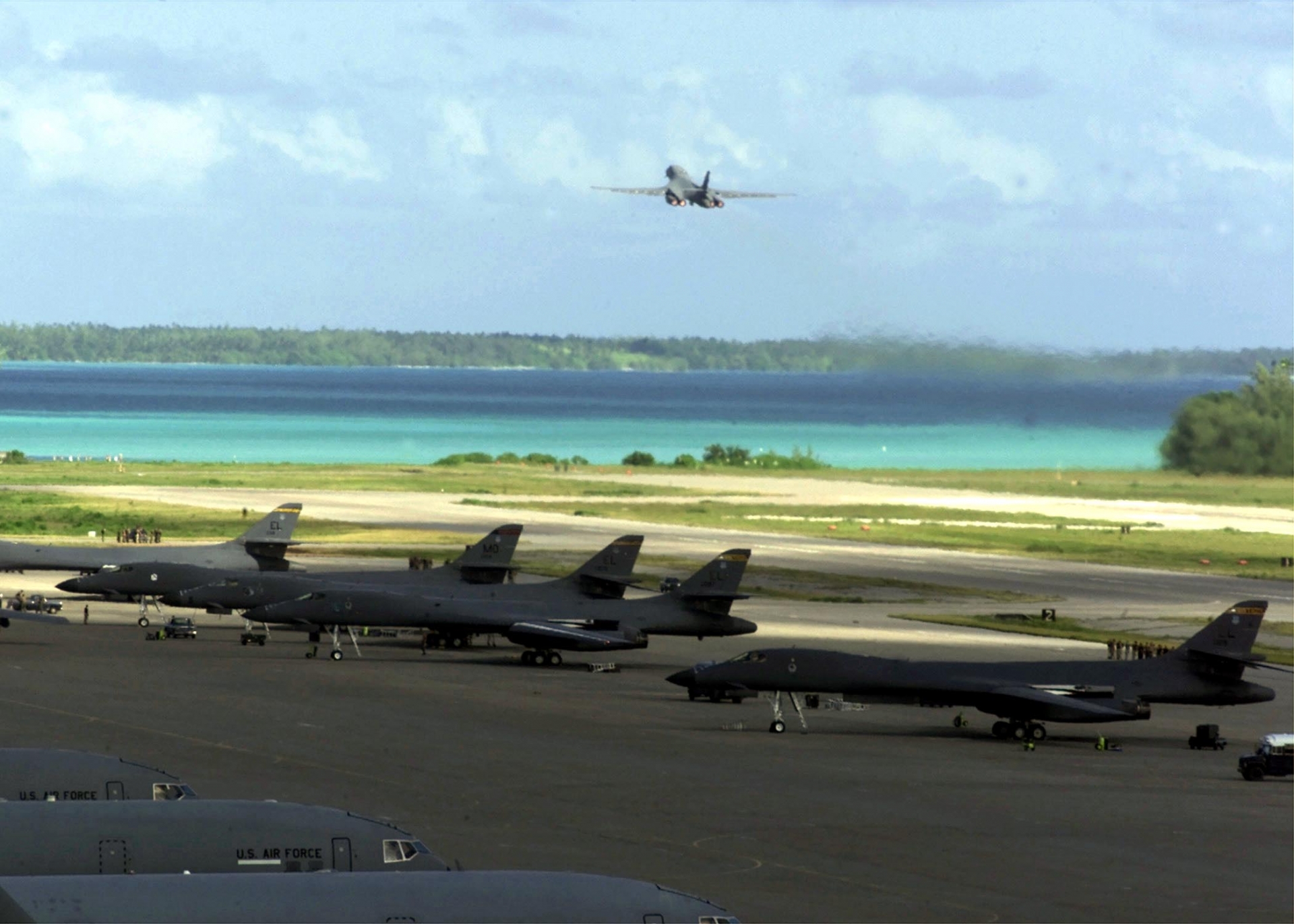 |
| Photo: Wikipedia |
> Base size: 7,000 acres
> Cost of base: $4.5 billion
> Service branch: Navy
> Nearest city: Diego Garcia
A speck in the middle of the Indian Ocean, Diego Garcia is an atoll of the Chagos Archipelago that is situated just south of the equator. It is here that a naval support facility may be found. The base offers maintenance, installation, and logistical support to US and NATO vessels and aircraft that are stationed in the regions surrounding the Indian Ocean and the Arabian Gulf.
In 1966, the United States and Great Britain came to an official agreement to jointly use Diego Garcia for their respective military operations.
AMAZING FACTS ABOUT US MILITARY HISTORYThe Army is Older Than the U.S.The U.S. Army predates the United States by at least one year. Before the United States of America were formally created in 1776, George Washington formally established the Continental Army and headed it. Coast Guard “Reserve” Service Used to Be UnpaidAround World War II, an act of Congress mandated the Coast Guard use unpaid civilians to help protect waterways in their own motorboats or yachts. The Auxiliary and Reserve Act of 1941 changed the Reserve into an active branch and developed a civilian volunteer service that’s now known as the U.S. Coast Guard Auxiliary. Nuclear Aircraft Carrier Named After a U.S. PresidentIn 1998, the USS Harry S. Truman (CVN 75) became the first Nimitz-class aircraft carrier to be named after a U.S. president. The nuclear-powered carrier’s maiden voyage took place in November 2000. Its first major deployment covered more than 44,000 nautical miles. The Swastika Wasn’t Always A Symbol of EvilIt's vital to keep in mind that the swastika was originally a popular Native American good luck symbol despite being more frequently known for its Nazi affiliation. In commemoration of the numerous Native Americans who served in the Division up until 1933, it was also worn by the 45th Infantry on their left shoulder. The Thunderbird was chosen as a replacement because of its association with German Nazi Socialism. Veterans Day is Held on a Meaningful DayArmistice Day, or the end of World War I, occurred on the 11th month on the 11th day at the 11th hour — November 11. Originally, this was known as Armistice Day, but it was changed in 1954 by President Eisenhower to Veterans Day instead. This is why we hold tributes for veterans on November 11, Veterans Day. Lincoln Signed the Medal of Honor into CreationIn the 1800s, Iowa Senator James W. Grimes drafted a law that authorized the manufacture of "medals of distinction" and sought to "advance the effectiveness of the Navy." The (Navy) Medal of Honor was approved by President Lincoln, and 200 medals were made and given out. Private Jacob Parrott was the initial recipient in 1862. Since then, more than 3,500 people have won the distinction, which is the greatest accolade for bravery in battle. The Department of Defense is OldThe Department of Defense (DoD) is responsible for providing the resources our armed forces need to protect the United States. It’s been around forever, too. Congress established the “War Department” in 1789, which now is better known as the Department of Defense. Psychics Played a Role in Military IntelligenceThe book and movie, The Men Who Stare at Goats, was based on U.S. military-funded paranormal research called “remote viewing.” Part of the Stargate Project, psychics performed parapsychic intelligence and research operations for the military from 1972 to 1995. The program shut down after 20-plus years of operation. Dogs Play a Critical Part of Military OperationsDogs assist US soldiers in every major fight. Nonetheless, it took until WWII for their work to receive formal recognition. Doberman Pinschers served in the Pacific region of World War Two as scouts and messengers. Military working canines of today are an important component of military operations. In actuality, a fully trained explosives dog might cost up to $150,000. Women Have Always Been Involved in the MilitarySince the start of the American military, women have filled a variety of positions. Agent 355, a female spy engaged by George Washington during the Revolutionary War. Amazingly, nobody knows who she really is. Cathay Williams, using the alias William Cathay, became the first black woman to enlist in the American Army in 1866. America Has Declared War 11 TimesAlthough the U.S. has been at war for 93% of its existence, we’ve only formally declared war 11 times. This includes five separate conflicts: the War of 1812, War with Mexico, the Spanish-American War, World War I, and World War II. |
Full List of U.S Military Bases in the World
Army – United States
Alabama
Fort Rucker
Redstone Arsenal
Alaska
Fort Richardson
Fort Wainwright
Joint Base Elmendorf-Richardson
Arizona
Fort Huachuca
Yuma Proving Ground
California
Fort Irwin
Presidio of Monterey
Colorado
Colorado Springs Military Bases
Fort Carson
District of Columbia
Walter Reed Army Medical Center
Florida
United States Southern Command
Georgia
Fort Benning
Fort Gordon
Fort Stewart
Hunter Army Airfield
Hawaii
Oahu Hawaii Military Bases
Schofield Barracks/Fort Shafter
Tripler Army Medical Center
Kansas
Fort Leavenworth
Fort Riley
Kentucky
Fort Campbell
Fort Knox
Louisiana
Fort Polk
Maryland
Aberdeen Proving Ground
Fort Detrick
Fort George G. Meade
Massachusetts
Fort Devens
Missouri
Fort Leonard Wood
New Jersey
Joint Base McGuire-Dix-Lakehurst
New York
Fort Drum
Fort Hamilton
United States Military Academy, West Point
North Carolina
Fayetteville North Carolina Military Bases
Fort Bragg
Oklahoma
Fort Sill
Pennsylvania
Carlisle Barracks
Puerto Rico
Fort Buchanan
South Carolina
Fort Jackson
Texas
Camp Bullis
Fort Bliss
Fort Hood
Fort Sam Houston
Joint Base San Antonio
Utah
Dugway Proving Ground
Virginia
Fort Belvoir
Fort Eustis
Fort Lee
Fort Myer
Fort Story
Hampton Roads Military Bases
Joint Base Langley-Eustis
Joint Base Myer - Henderson Hall
Joint Expeditionary Base Little Creek - Fort Story
Washington
Fort Lewis
Joint Base Lewis-McChord
Wisconsin
Fort McCoy
Army – Overseas
Belgium
US Army Garrison Benelux
US Army Garrison BeneluxSHAPE
Germany
US Army Garrison Ansbach
US Army Garrison Baumholder
US Army Garrison Bavaria
US Army Garrison Hohenfels
US Army Garrison Rheinland-Pfalz
US Army Garrison Stuttgart
US Army Garrison Wiesbaden
USAG Bavaria, Garmisch
Italy
Camp Darby
US Army Garrison Italy
Japan
Camp Zama
Torii Station
Korea
US Army Garrison Daegu
US Army Garrison Humphreys
US Army Garrison Red Cloud/Casey
US Army Garrison Yongsan
Marines – United States
Arizona
Marine Corps Air Station Yuma
California
Marine Corps Air Ground Combat Center - Twentynine Palms
Marine Corps Air Station Miramar
Marine Corps Base Camp Pendleton
Marine Corps Recruit Depot San Diego
San Diego Military Bases
Florida
United States Southern Command
Hawaii
Marine Corps Base Hawaii
Oahu Hawaii Military Bases
North Carolina
Jacksonville North Carolina Military Bases
Marine Corps Air Station Cherry Point
Marine Corps Air Station New River
Marine Corps Base Camp Lejeune
South Carolina
Beaufort South Carolina Military Bases
Marine Corps Air Station Beaufort
Marine Corps Recruit Depot Parris Island
Virginia
Henderson Hall
Joint Base Myer - Henderson Hall
Marine Corps Base Quantico
Marines – Overseas
Japan
Camp S. D. Butler
Marine Corps Air Station Iwakuni
Navy – United States
California
China Lake Naval Air Weapons Station
Naval Air Station Lemoore
Naval Air Station North Island
Naval Amphibious Base Coronado
Naval Base Coronado
Naval Base Point Loma
Naval Base San Diego
Naval Base Ventura County
Naval Postgraduate School
San Diego Military Bases
Connecticut
Naval Submarine Base New London
District of Columbia
Joint Base Anacostia-Bolling
Naval District Washington
Florida
Naval Air Station Jacksonville
Naval Air Station Key West
Naval Air Station Pensacola
Naval Air Station Whiting Field
Naval Station Mayport
Naval Support Activity Panama City
Pensacola Florida Military Bases
United States Southern Command
Georgia
Naval Submarine Base Kings Bay
Hawaii
Joint Base Pearl Harbor - Hickam
Naval Station Pearl Harbor
Oahu Hawaii Military Bases
Illinois
Naval Station Great Lakes
Louisiana
Naval Air Station Joint Reserve Base New Orleans
Maryland
Joint Base Andrews
NSA Bethesda Walter Reed Medical Center
National Naval Medical Center
Naval Air Station Patuxent River
Navy Fort Meade
US Naval Academy
Mississippi
Naval Air Station Meridian
Naval Construction Battalion Center Gulfport
Nevada
Naval Air Station Fallon
New York
Naval Support Activity Saratoga Springs
Rhode Island
Naval Station Newport
South Carolina
Beaufort South Carolina Military Bases
Joint Base Charleston
Naval Hospital Beaufort
Naval Weapons Station Charleston
Tennessee
Naval Support Activity Mid-South
Texas
Naval Air Station Corpus Christi
Naval Air Station Joint Reserve Base Fort Worth
Virginia
Hampton Roads Military Bases
Joint Expeditionary Base Little Creek - Fort Story
Naval Air Station Oceana
Naval Air Station Oceana Dam Neck Annex
Naval Amphibious Base Little Creek
Naval Station Norfolk
Washington
Naval Air Station Whidbey Island
Naval Base Kitsap
Naval Base Kitsap - Bangor
Naval Base Kitsap - Bremerton
Naval Hospital Bremerton
Naval Station Everett
Navy – Overseas
Bahrain
Naval Support Activity Bahrain
Cuba
Naval Station Guantanamo Bay
Greece
US Naval Support Activity Souda Bay
Italy
Naval Air Station Sigonella
Naval Support Activity Naples
Japan
Commander Fleet Activities Sasebo
Commander Fleet Activities Yokosuka
Naval Air Facility Atsugi
Korea
Commander Fleet Activities Chinhae
Singapore
Navy Region Singapore
Spain
Naval Station Rota
United Kingdom
Navy Support Facility Diego Garcia
Air Force – United States
Alabama
Maxwell-Gunter
Alaska
Eielson
Elmendorf
Joint Base Elmendorf-Richardson
Arizona
Davis-Monthan Air Force Base
Luke Air Force Base
Arkansas
Little Rock
California
Beale Air Force Base
Edwards Air Force Base
Los Angeles Air Force Base
March Air Reserve Base
Travis Air Force Base
Vandenberg Air Force Base
Colorado
Buckley Air Force Base
Colorado Springs Military Bases
Peterson Air Force Base
Schriever Air Force Base
United States Air Force Academy
Delaware
Dover Air Force Base
District of Columbia
Joint Base Anacostia-Bolling
Florida
Eglin Air Force Base
Hurlburt Field
MacDill Air Force Base
Patrick Air Force Base
Pensacola Florida Military Bases
Tyndall Air Force Base
United States Southern Command
Georgia
Moody Air Force Base
Robins Air Force Base
Hawaii
Hickam Air Force Base
Joint Base Pearl Harbor - Hickam
Oahu Hawaii Military Bases
Idaho
Mountain Home Air Force Base
Illinois
Scott AFB Guide
Indiana
Grissom Air Reserve Base
Kansas
McConnell Air Force Base
Louisiana
Barksdale Air Force Base
Maryland
Andrews Air Force Base
Joint Base Andrews
Massachusetts
Hanscom Air Force Base
Mississippi
Columbus Air Force Base
Keesler Air Force Base
Missouri
Whiteman Air Force Base
Montana
Malmstrom Air Force Base
Nebraska
Offutt Air Force Base
Nevada
Area 51
Creech Air Force Base
Nellis Air Force Base
New Jersey
Joint Base McGuire-Dix-Lakehurst
New Mexico
Cannon Air Force Base
Holloman Air Force Base
Kirtland Air Force Base
North Carolina
Fayetteville North Carolina Military Bases
Pope Field
Seymour Johnson Air Force Base
North Dakota
Grand Forks Air Force Base
Minot Air Force Base
Ohio
Wright-Patterson Air Force Base
Oklahoma
Altus Air Force Base
Tinker Air Force Base
Vance Air Force Base
South Carolina
Charleston Air Force Base
Joint Base Charleston
Shaw Air Force Base
South Dakota
Ellsworth Air Force Base
Texas
Dyess Air Force Base
Goodfellow Air Force Base
Joint Base San Antonio
Lackland Air Force Base
Laughlin Air Force Base
Randolph Air Force Base
Red River Army Depot
Sheppard Air Force Base
Utah
Hill Air Force Base
Virginia
Hampton Roads Military Bases
Joint Base Langley-Eustis
Langley Air Force Base
Washington
Fairchild Air Force Base
Joint Base Lewis-McChord
McChord Field
Wyoming
F. E. Warren Air Force Base
Air Force – Overseas
Germany
Geilenkirchen NATO Air Base
Ramstein Air Base
Spangdahlem Air Base
Guam
Andersen Air Force Base
Italy
Aviano Air Base
Japan
Kadena Air Base
Misawa Air Base
Yokota Air Base
Korea
Kunsan Air Base
Osan Air Base
Spain
Moron Air Base
Turkey
Incirlik Air Base
Izmir Air Station
Team DoD-Turkey
United Kingdom
RAF Alconbury, RAF Molesworth
RAF Croughton, Fairford
RAF Lakenheath
RAF Mildenhall
Coast Guard – United States
California
Coast Guard Training Center Petaluma
US Coast Guard Station San Diego
Hawaii
Coast Guard Sector Honolulu
Oahu Hawaii Military Bases
Maryland
Coast Guard Sector Baltimore
Virginia
Coast Guard Sector Hampton Roads
Washington
Coast Guard Sector Puget Sound
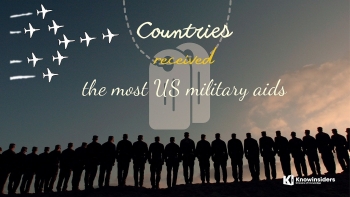 Which Countries Received The Most Military Aids From The US Right Now - Top 10 Which Countries Received The Most Military Aids From The US Right Now - Top 10 Along with economic assistance, military aid is one of the two primary categories of foreign aid spending. Here are 10 countries that received the most ... |
 Where is Miss Ukraine Lenna After Joining Army and Biography, Personal Life Where is Miss Ukraine Lenna After Joining Army and Biography, Personal Life Miss Ukraine 2015 Anastasiia Lenna, 25, has astonished the world by picking up a gun to fight against Russia Army. Check out her biography, family, ... |
 How Strong Is The American Army - No.1 Militaries In The World and Fact-Check How Strong Is The American Army - No.1 Militaries In The World and Fact-Check For 2022, United States is ranked 1 of 140 out of the countries considered for the annual GFP review. How to Maintain 'American Military Dominance' ... |
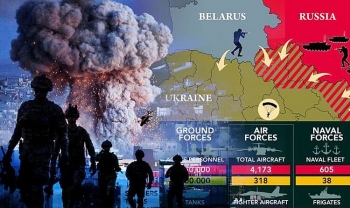 2022 Military Strengths of Russia and Ukraine in Comparison 2022 Military Strengths of Russia and Ukraine in Comparison How does Russia’s military compare to Ukraine’s in 2022? |























